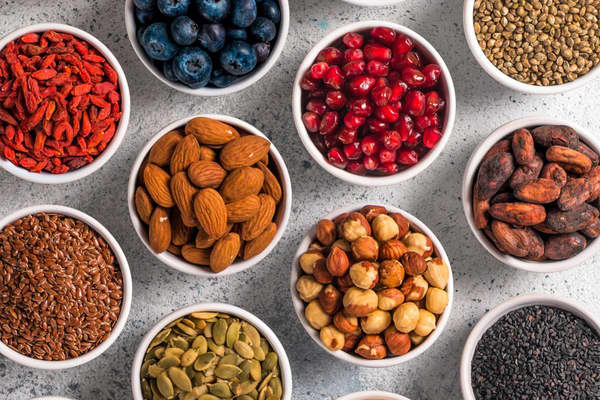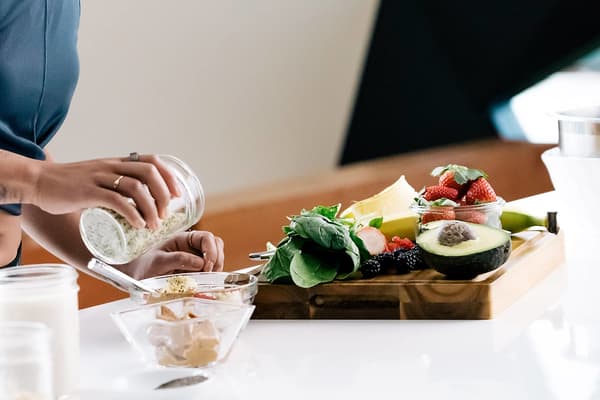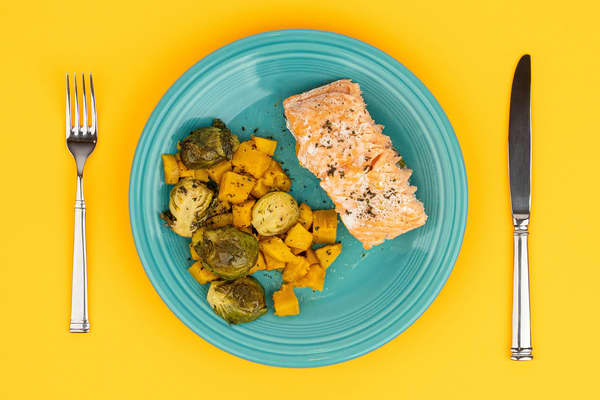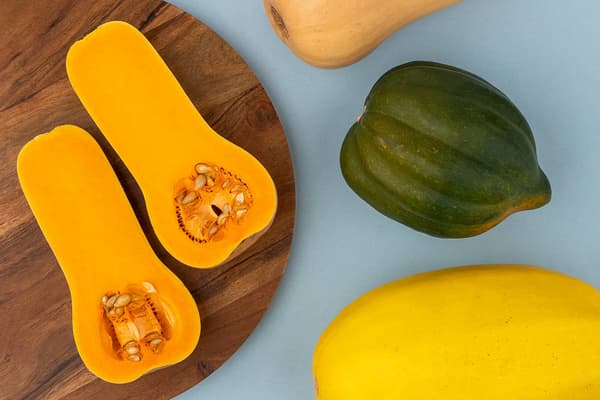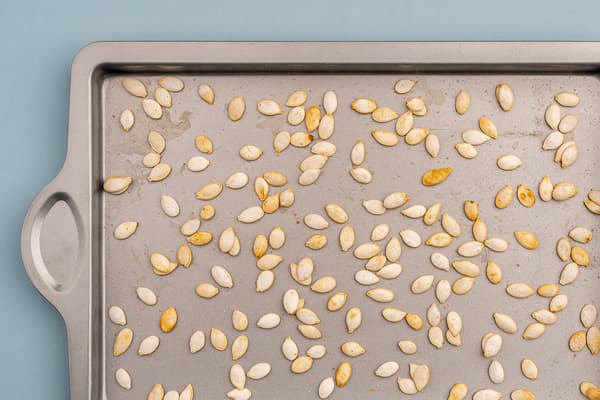Five Healthy School Lunch Ideas for Kids
Nutrition
A registered dietitian dishes out her top, kid-approved healthy school lunch ideas.

Packing lunch for children is one way to make sure they get the nutrition they need to support learning, energy levels and physical growth.
Packing school lunches is a sure-fire way to ensure that your child stays focused and energised throughout the day, whether your child is a picky eater, has specific dietary needs or has a voracious appetite. That's because children have specific nutritional needs that support their physical growth and brain development. Calcium, iron, B vitamins and vitamin C are just a handful of those important vitamins and minerals.
(Related: What Is an Iron Deficiency and How Do I Know If I Have It?)
Consuming adequate amounts of protein and complex carbohydrates is important for optimal growth. And when more complex carbohydrates and proteins—in addition to vegetables and fruits—are consumed, they help to regulate mood, according to a 2020 research article in the journal Frontiers in Psychiatry. Fibre is another important nutrient category that can help children with their gut health, as it promotes healthy digestion.
When preparing food for kids, it's important to strike a balance between honouring their cravings and providing nutrient-dense foods. One of the best ways to ensure children will enjoy their lunch is to ask them what types of flavours and textures they enjoy best. Adding a food or ingredient to their meal that you know they'll like while also adding a new food can be a productive way to pack meals you know will get eaten.
Healthy School Lunch Ideas
1.Leftovers From Dinner
One way to create an easy-to-make school lunch is to utilise leftovers. Leftovers work great in a school lunch, especially if you know the meal was a hit. Bonus: It's also a great way to mitigate food waste in the household.
Turkey or beef burgers with baked sweet potato chips can be an easy way to transform a simple dinner into a kid-approved, healthy lunch. Turkey and beef are both rich in iron to support mood, focus and energy levels. Worried that your child doesn't eat enough vegetables? Try adding shredded courgette and carrots into the burger meat. These burgers can be enjoyed cold, but they're also easy to heat up in a microwave (if the school provides one). Sweet potato chips can be made from scratch by slicing and roasting a sweet potato and adding a dash of salt and pepper. Or, you could purchase pre-cut and frozen chips. Sweet potatoes with the skin are rich in fibre and are also a great source of vitamin A, which is important for eye health and immune function.
2.Legume-Based Pasta
Make-ahead meals that can last for a couple of days in the fridge and serve as repeat lunches are second to leftovers with ease. Vegetable pasta salads, made with lentil- or chickpea-based noodles, are a great way to sneak more fibre and plant-based protein into a kid's diet, all while providing carbs. Why opt for a box of pasta made from legumes? Chickpea and lentil noodles provide more than double the fibre and protein than their standard wheat flour counterpart. Pesto or Italian vinaigrette are great ways to dress the pasta and will hold up for days in the fridge, without getting too soggy.
3.Peanut Butter and Jam Sammies
Peanut butter and jam sandwiches are a classic healthy school lunch staple, but they often contain more sugar than beneficial nutrients such as fibre and protein. The American Academy of Pediatrics suggested that children over the age of 2 limit their added sugar intake to less than 25 grams (about 6 teaspoons) per day. For context, one tablespoon of a traditional jam contains nine grams of added sugar and conventional peanut butters can contain anywhere from three to five grams of added sugar.
A helpful hack to keep a child's meal healthy and nutritious—while also delicious—is to use peanut butter that contains zero grams of added sugar. In fact, the only ingredient in the peanut butter you buy should be peanuts (and maybe some salt). For jam, swap the jarred stuff for fresh berries or bananas. Smushed raspberries or blueberries, as well as sliced bananas, add sweetness, fibre and important vitamins to the sandwich without the added sugars.
4.Pizza Bagels
Pizza bagels are a kid favourite and are super easy to prepare at home—all you need is a toaster oven or regular oven. Here's what you'll need: Grab a wholewheat bagel, tomato sauce without added sugar and a full-fat dairy cheese of your choice. Full-fat dairy is preferable as it will help keep them fuller for longer. The lunch staple can be enjoyed hot or cold (and can be packed the night before). Dress the bagel with the above toppings and toast or broil.
Honouring a child's favourite food, like pizza, is a great way to incorporate more wholesome foods into their diet. For example, you can stack some baked broccoli bites and Parmesan cheese onto the pizza bagel. Broccoli is an excellent source of vitamin C, fibre and iron. Between the Parmesan on the broccoli and the cheese on the pizza bagel, this lunch is also packed in calcium, which is important for supporting the growth of strong bones.
5.Quesadillas
Quesadillas are an easy dish that can be prepared the night before, cut into triangles and wrapped in foil so they're ready to go in a child's lunch box in the morning. Swap out white flour for a wholewheat variety to boost the fibre content and add in a full-fat cheese. Next, add whatever protein the child prefers, such as shredded chicken or black beans. This will help regulate their blood sugar levels and even help to keep them satiated for longer. For sides, consider packing diced tomato with coriander (a homemade take on pico de gallo) and guacamole (either homemade or shop-bought works). And to add something a little sweet to the savoury meal, you can throw in the child's favourite fruit.
The bottom line: The best lunch you can make for a child is one that they will eat. Making easy swaps such as using wholegrain starches instead of refined starches, choosing food products with minimal added sugars and adding some sort of fruit or vegetable into the lunch box are low-lift ways to healthify a kid's lunch. Always ask a child for their input when prepping their lunch and remember, it can take many exposures to new foods before a kid develops a palate for them.
Words by Sydney Greene, MS, RD

